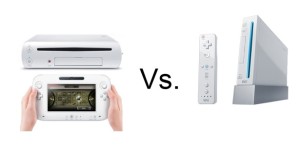Investor Place reports that despite the recent surge in interest for digital copies of films that people still much prefer to view their movies using DVDs and Blurays. The particular point of interest for the article, “Why UltraViolet, Flixster Won’t Save Movie Sales” ,is the service called Flixer (owned by Warner Bros) which utilizes the UltraViolet cloud. The writer of this article, Anthony Agnello, clarifies the service by stating, “UltraViolet…gives consumers who buy a DVD or Blu-ray version of a movie access to a digital version of that movie, which can be downloaded repeatedly on other devices because UltraViolet stores the user’s digital rights info.”
The article notes that the recent interest in digital movie sales is driven by consumer interest in websites such as Hulu and Netflix. From a personal perspective, I can’t see why film execs would jump to the conclusion that consumers want to watch their movies solely from download. I use Hulu to get caught up on certain shows that I may have missed through the week and older shows that are no longer in syndication. Hulu is great because it is free and easy. Netflix, on the other hand, being a paid service is an entirely different matter. What I love about Netflix is that you have the option to stream certain things while still retaining the ability to get discs in the mail.
As an avid movie watcher I do appreciate the opportunity to get a digital version of a film in addition to the hard copy so that I can take the movie with me. The problem is that I love my DVD collection. I enjoy looking at my shelf of movies almost as much as I enjoy looking at my shelf of books. Plus, with the recent technological advances in television and movie players, my movie watching experience is much richer when I can actually sit down and watch a movie from my television.
Agnello explains the strain that the digital era is having on the film industry by stating, “if the current market is representative of where the home video market will be in five years, the UltraViolet coalition needs to reassess its plans. Forget the risk of tarnishing its reputation with retail partners like Best Buy (NYSE:BBY) and Wal-Mart (NYSE:WMT) by emphasizing digital sales. Consumers aren’t interested in buying movies at all.”
The issue at hand is that with the current economy consumers, myself included, are less willing to pay full price for movies. I haven’t purchased a movie more expensive than $10 in the last six months because I know that the prices for new movies will drop within a few weeks of release. So the task that Hollywood is facing is how to harness the money that is being lost every year due to decreased sales across the board. If Flixster can make itself out to be the iTunes of the movie industry, things may equalize.







